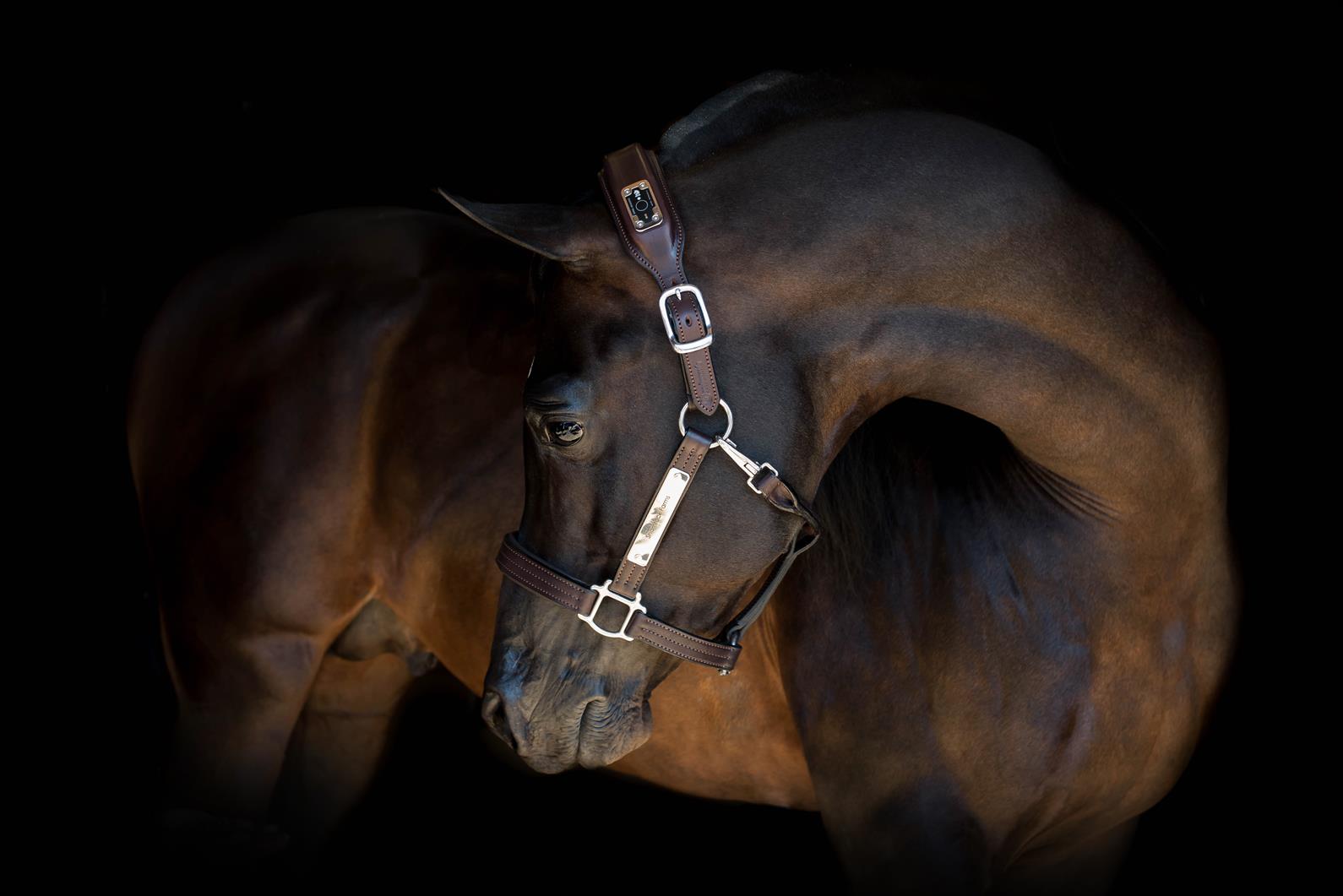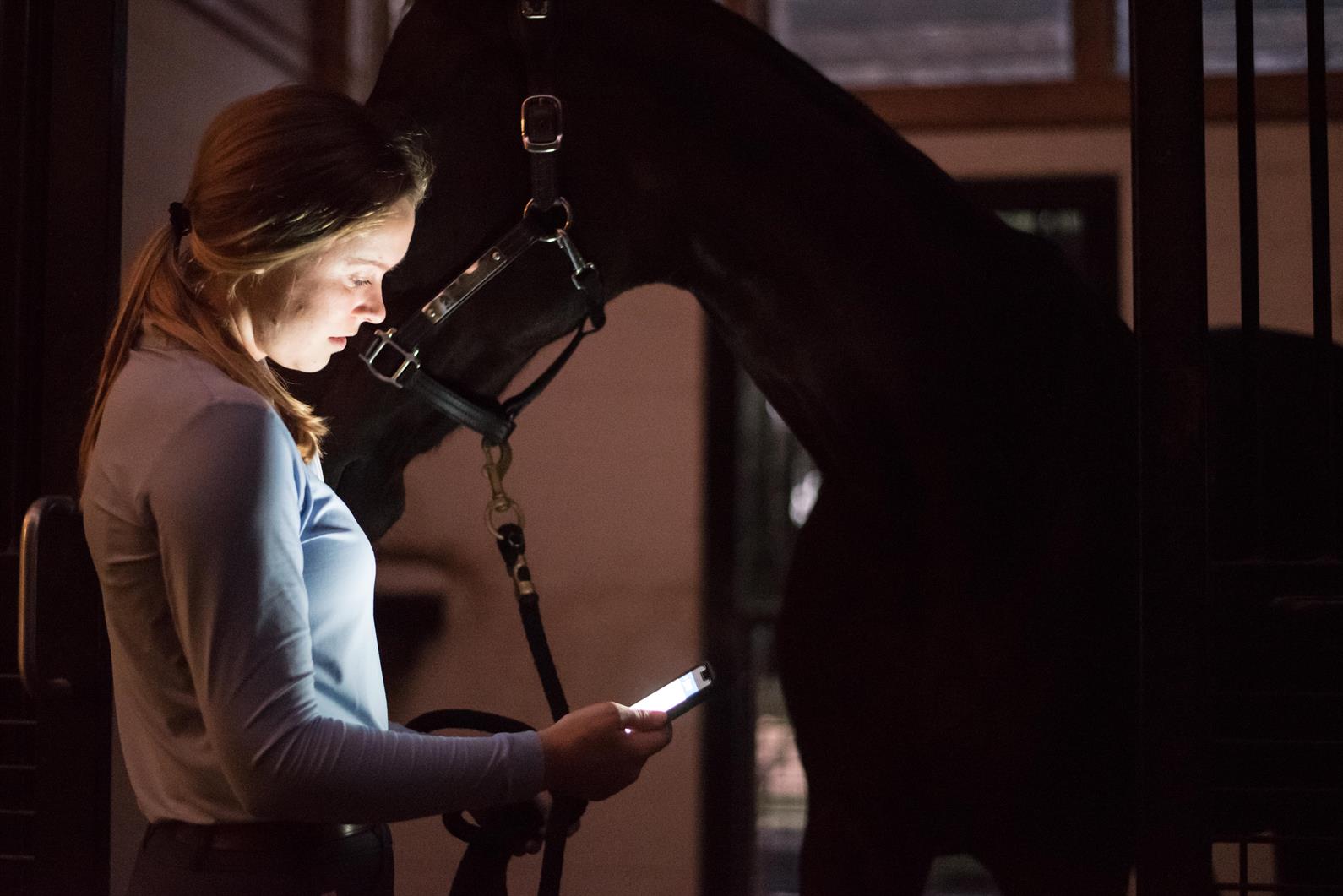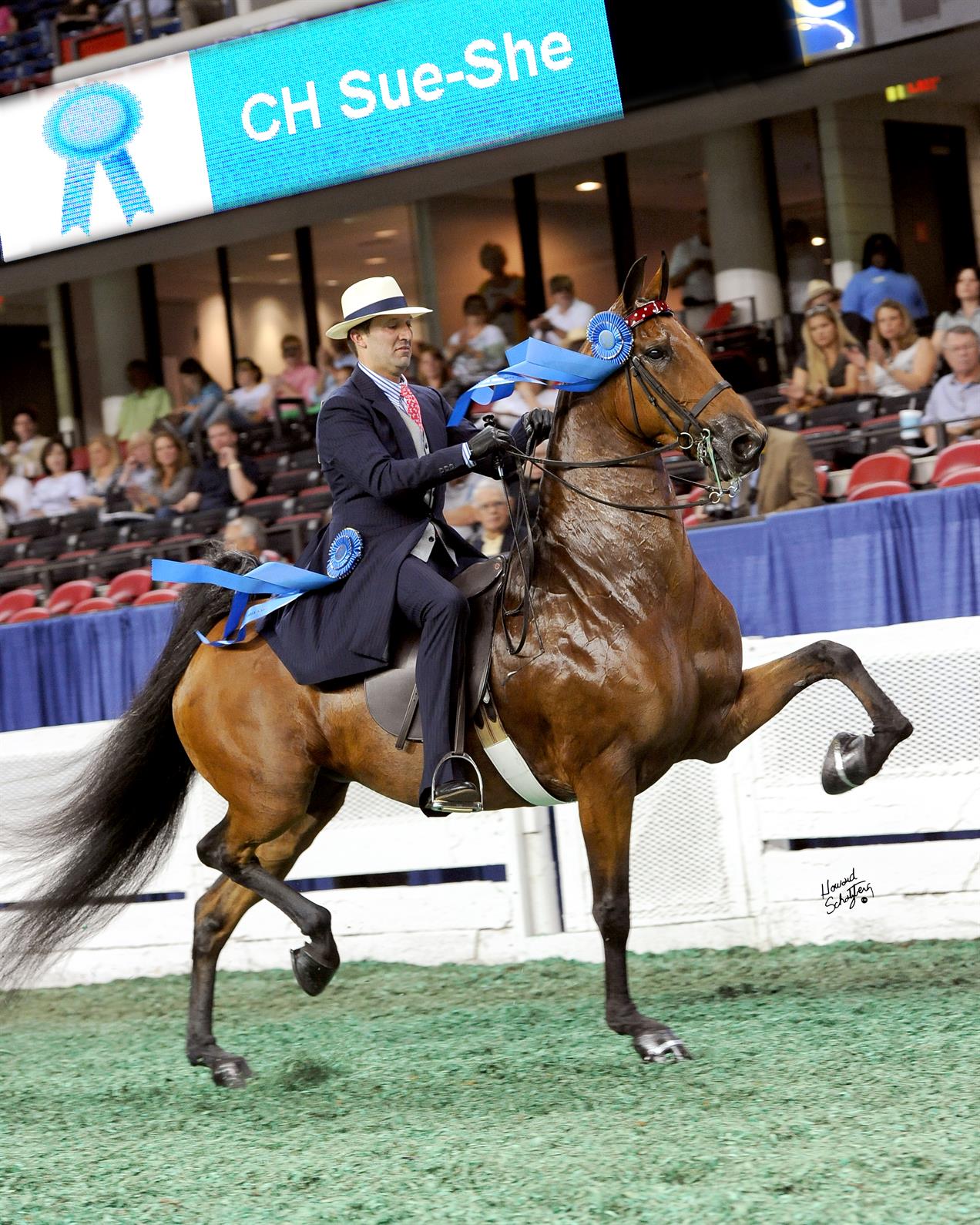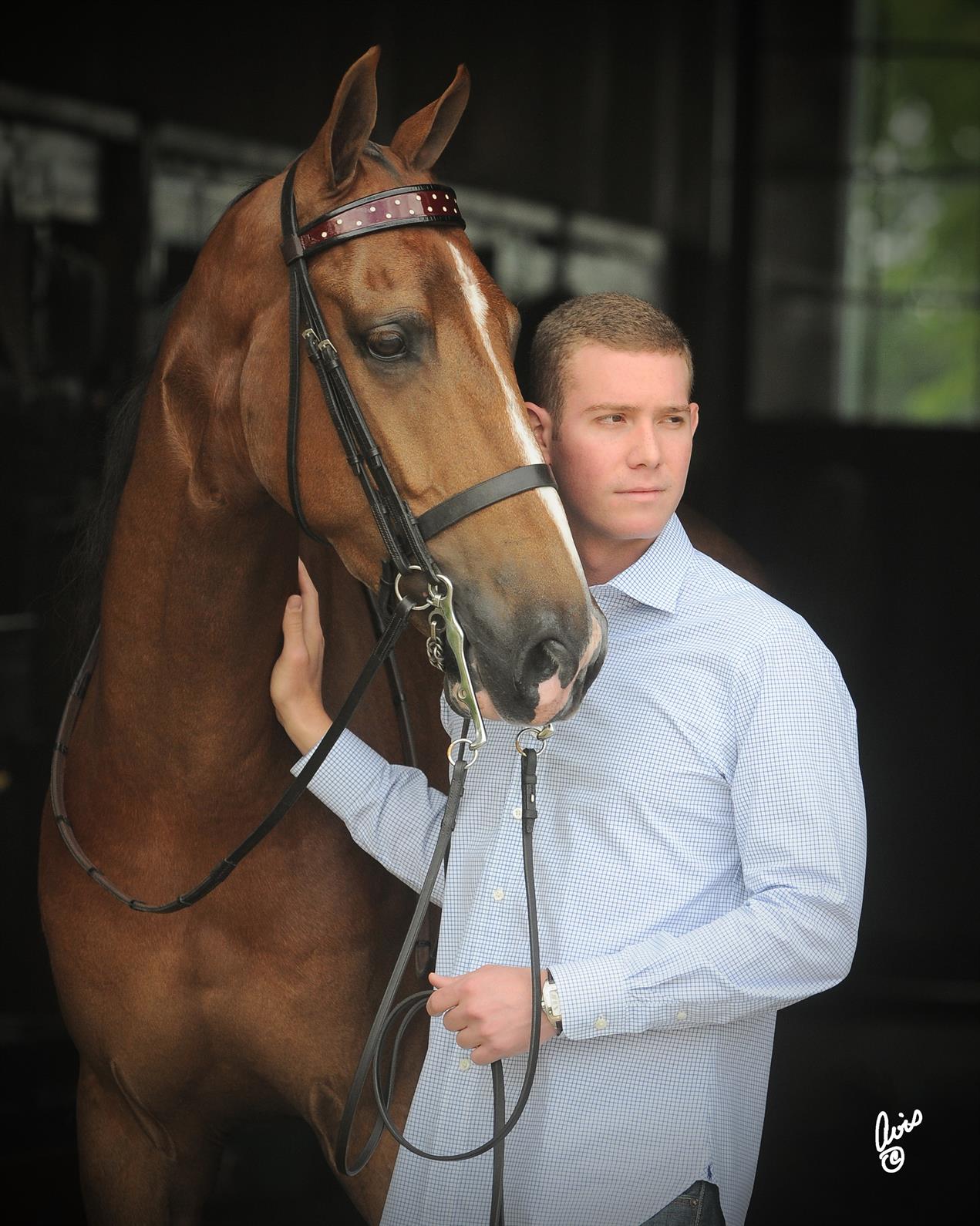
Photo: Courtesy of Protequus®
Jeffrey Schab has lived every horse owner’s nightmare twice, once when he lost his first horse to an immune disorder and more recently in 2013, when his husband’s American Saddlebred succumbed to colic.
“It was like, ‘Oh, my God, we love our animals and we would do anything for them, but we can’t always be with them to protect them,’” Schab recalled. Those painful losses prompted Schab, an accomplished equestrian and biomedical engineer, to look for a better way to more closely monitor horses, especially overnight when they are unsupervised. The result: the NIGHTWATCH smart halter, which noninvasively monitors a horse’s heart rate, respiration, and activity and is capable of alerting caretakers to early signs of distress, such as during colic, being cast, or foaling.
Having an early-warning health monitor in the barn may feel like a luxury, but it can also mean the difference between life and death for a horse in distress, Schab says. And that was Schab’s goal in 2013 when he founded the company Protequus® and began exploring the possibility of wearable tech for horses: saving equine lives.
“Back in 2013, I didn’t know whether this was going to be a wearable device, a stall-based sensor system, or some other noninvasive solution,” Schab said. “When I stopped to think and recognized that these animals spend more than half their life alone and unsupervised, I just knew I had to do something. These animals rely on us and they deserve better.”
How It Works
The NIGHTWATCH smart halter looks like an elegant high-end halter—and it is. Protequus worked with sixth-generation leather craftsmen at Freedman’s to design a superb breakaway halter in an all-natural leather hide, a safer material than nylon for turnout or 24-hour wear. “Nylon is a synthetic material that doesn’t break; it only stretches,” Schab explained. “That stretch point of nylon requires nearly five times the force needed to break an all-natural leather hide.
“When we designed this halter, we kept the horse at the center of all our decisions. It’s not by accident that the leather is triple-stitched, that the crown and noseband are padded, or that we opted for stainless steel versus brass hardware. It was all for a purpose.”
If you’re curious also about the safety of the electronic components, Schab is quick to offer reassurance. “This is safe technology, and we’ve been through multiple regulatory steps to ensure its safety and compliance,” he said.

Photo: Courtesy of Protequus®
Despite the traditional form of a halter, the NIGHTWATCH smart halter isn’t your grandfather’s halter. In the crown piece are approximately two ounces of electronics, including novel noninvasive radiofrequency technology to monitor a horse’s heart rate and respiration, and a variety of other sensors to asses a horse’s activity, posture, and motion.
When used in its flagship smart mode, the smart halter will “learn” an animal’s baseline normal physiology and behavior and look for deviation in these parameters that likely correlates with pain or distress. This change or deviation from baseline is then quantified on a proprietary 10-point scale called the Equine Distress Index® (EDI®).
A horse’s EDI score makes it easy for everyone to understand how a horse is doing, even if you’ve never seen that horse before. Any number of caretakers assigned to a horse can be alerted via text, call, and email if a horse’s EDI score breaches a predefined threshold set by a caretaker.
“The EDI is like a FICO score for your horse’s health,” says Schab. “It’s a single number, one to 10, designed to elicit one of two reactions: either ‘Oh, thank God’ or ‘Oh, no.’ The lower a horse’s EDI score, the happier and healthier they are.”
Smart mode requires an approximate 80-hour learning period that should take place when a horse is not ill or otherwise distressed. But the smart halter also offers a manual mode that does not require a learning period and therefore can be used on sick/injured horses immediately out of the box.

Photo: Howard Schatzberg
“Most of our early adopters of this technology were people who had a problem horse,” Schab explained. “Maybe their horse had just colicked and were in the clinic or perhaps they had a mare due to foal in a week and were looking for some added security. It’s difficult for our technology to learn what normal looks like when the first application is on a horse already in a suboptimal, distressed state.”
In either smart or manual mode, a single halter can be transferred and used on multiple horses through three simple clicks within the NIGHTWATCH app. The app is free and available in the App Store for iOS devices and in Google Play for Android devices.
Schab hopes that the halter's easy transferability will promote its wide adoption.
“The future of Protequus is not about selling cool halters," said Schab. “The future is in the data we’re collecting. The halter is a means to an end. It is merely a conduit to acquiring unbiased empirical evidence of what good versus bad looks like, so we can refine our models and algorithms to optimize health and performance outcomes in these animals.
“Owners, trainers, breeders, and veterinarians have been using the halters in a variety of ways, and that’s a good thing,” he added. “The original vision was for this technology to be used on horses overnight so we can get ahead of problems, but the market told us there is a larger number of opportunities with performance and pregnant horses, as well as high-risk animals who need step-down care, rehab, etc. So how people derive value from the halter has evolved significantly, and that’s wonderful, because that’s exactly what we want people to do. We are committed to the long-term success of this product, this company, and, most importantly, our impact on the health and performance outcomes of these animals.”
A Personal Calling
Schab isn’t only the founder of Protequus; he also owns five American Saddlebreds and uses the smart halter on his own animals. “My mare recently had colic surgery at Hagyard Equine Medical Institute for two strangulating lipomas, and as soon as she came home, we put the halter on her so we could keep a close eye on her for complications following surgery,” he said.
Schab grew up in New Hampshire and fell in love with horses at an early age. The late equine veterinarian Dr. Scott Bennett stoked Schab’s interest in equine veterinary medicine, serving as a mentor when Schab attended Tufts University and then later when he started Protequus. Schab received a biomedical engineering degree and built a successful career in Manhattan working in human health-care marketing services.

Photo: Avis Girdler
But he turned his attention back to horses full time in 2013 after husband Wade Giles lost his eight-year-old American Saddlebred, Undulata's Nuts and Bolts (“Snoop”), to colic.
Snoop had competed at the World’s Championship Horse Show in Louisville, Ky., just days before his death early on the morning of August 25, 2013.
“At 6:30 that morning, Snoop’s trainer called Wade and said, ‘I don’t know how to tell you this, but Snoop is gone,’” Schab recalled. “When the caretaker had arrived that morning, he found Snoop down in his stall. He was still alive, but by the time the vet was called, he passed alone in his stall.”
A necropsy revealed an epiploic foramen entrapment, a type of hernia that is a common cause of small intestinal strangulation in horses. “He had obviously been suffering for quite some time,” Schab said, “and when I learned of his likely suffering, that was the catalyst to say, ‘I’ve lost too many horses too soon. I’ve got to do something.’
“In January of 2013, I had exited my last company in New York and moved to Austin, Texas. I had no job, no network, and was not sure what I was going to do. So when we lost Snoop that summer, it was almost like divine intervention saying, ‘You are an engineer, an equestrian, and an entrepreneur. This is what all of these tragedies have brought you to do.’ I felt it would be remiss of me not to explore what I could do to at least open up the dialogue around how we could prevent these types of unnecessary losses moving forward. It truly felt like a calling.”
Schab hopes his calling will help current and future generations of horses and their caretakers—and also change how we think about equine health and welfare.
“Our vision is to transform the larger $130 billion-plus animal health market through data science and predictive analytics,” he explained. “We wish to leverage Big Data and move to a preventative versus reactive model of care and that can only be done with data, such as the information we acquire with the smart halter. In the near future, we hope to partner with insurance companies to refine their actuarial models and challenge them on what risk looks like. We also hope to work with researchers to better stratify randomized studies while partnering with pharmaceutical companies to measure the impact of their interventions.
“We realize we’ve only begun to scratch the surface, and we are excited by the future,” he added. “The future is all about the data, and the smart halter is a great noninvasive tool to collect the data we need to optimize health and performance outcomes.”


